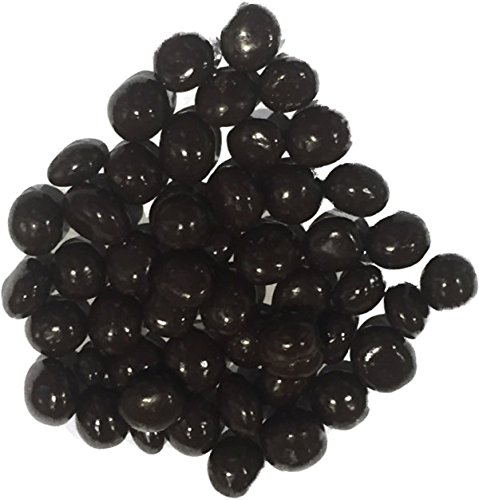Your Worst Nightmare Concerning Coffee Beans Types Get Real

Coffee Bean Types: Arabica, Robusta, Liberica, and Excelsa
If you're a coffee enthusiast you're probably aware that different kinds of beans produce varying flavor profiles. Learn more about four of the most well-known varieties: Arabica, Robusta, Liberica and Excelsa.
Excelsa beans, which are a variety of Liberica that is grown only in Southeast Asia. They have a more fruity and more tart flavor profile and are often added to blends of beans to enhance the flavor.
Arabica
Arabica is the most well-known coffee in the world accounting for 75% of the world's coffee bean production. Arabica beans are softer and sweeter than Robusta. They also come in various flavour profiles. The aroma and taste of coffee can be affected by the conditions in the conditions in which it grows and the methods of processing used.

The word "coffee" is derived from the Arabic word that means the berry. Coffee beans are actually seeds that grow in bright red berries. It is believed that the ancient Ethiopian shepherds discovered that their goats became energized after eating these fruits, and the cultivation of coffee quickly became widespread across the globe.
Coffee beans can flourish at high altitudes and thrive with cool temperatures and lots of rain. This is one of the main reasons that Arabica is regarded as the best tasting type of coffee.
Many specialty coffee shops and roasters focus on ethical sourcing of arabica beans, with a focus on fair wages for farmers and sustainable farming practices. These companies blend arabica beans to create unique coffees, which are suitable for different brewing methods. Blending allows control over the aroma, flavor, body and acidity of coffee. It is usually utilized to create an even and balanced taste that appeals to a broad market.
Robusta
Robusta beans (Coffea canephora) are the second most common type of coffee bean grown across the globe. They contain more caffeine per bean than Arabica and are more resistant to disease and pests. They also have higher levels of chlorogenic acids that are antioxidants found naturally. These acids can cause oxidation in the coffee brewing and produce undesirable flavors.
The plant is more resilient than the arabica and is able to thrive in less favorable conditions. It can tolerate higher temperatures and thrives in direct sunlight. It is faster growing and produces more coffee per plant than arabica, making it a cost-effective crop to cultivate.
While it may seem counterintuitive Robusta beans are typically mixed with arabica to create coffee blends. If you see names like Uganda or Kenya on a coffee bag it's likely that there's also some robusta.
Most roasters use a mixture of arabica and coffee beans to reduce costs while maintaining the quality. To ensure the integrity of the flavor you must select the best quality beans from a trusted source. This can be accomplished by purchasing your beans directly from farmers.
Liberica
Liberica beans are more or less football-shaped which distinguishes them from other coffee bean types. They are characterized by a smell that is fruity, floral and smoky. They are paired with other coffee bean types to give them a richer, more robust taste.
Liberica coffee beans are found in West Africa, Malaysia (Borneo) and Southeast Asia. They are tolerant of hot, humid climates and can thrive at low altitudes. They also have a better resistance to diseases than Arabica and Robusta.
These qualities make them ideal for home-growing. You can purchase seeds from a variety of sources. However, it's best to purchase the beans from local producers in order to ensure the highest quality. The best conditions for growing Liberica coffee are fertile, deep volcano soils with a pH that is moderately acidic, and enough annual rainfall.
Excelsa is a different variety of coffee bean. It was originally classified as a separate species, but has now been classified as a Liberica variant. These coffee beans are elongated ovals that are grown on large 20-30 foot coffee plants that are situated at medium altitudes. They have a distinct taste that is both tart and fruity that has made them a sought-after choice in house blends. They are also lighter on flavor and caffeine than Arabica and Robusta yet still have an unusual depth of flavor.
Excelsa
Excelsa coffee beans aren't as common as Arabica and Robusta yet they're the fourth most popular. In fact they were considered to be a separate coffee plant species until 2006 when they were reclassified to a synonym for Coffea liberica var. dewevrei. They are grown in Southeast Asia today and account for 7% of the global production of coffee. The beans are distinctive with a teardrop shape, and an intriguing dark flavor. They're typically used in blends to add extra body and a full, tart, ripened fruit flavor.
Arabica beans are the most well-known, and are known for having a sweeter taste. They thrive at higher altitudes and have warm, tropical climates. They can be a bit acidic. When properly roasted and brewed, they can have notes of chocolate, nuts, or even fruit.
medium roast coffee beans is the second most popular coffee in the world, and accounts for about 40% of all coffee consumed globally. These beans are smaller and more round but they have twice the amount of caffeine as Arabica. They also have more bitterness than the other two varieties and tend to have woody and earthy overtones.
After learning about the four most commonly used types of brew, it's time to pick your favorite drink. If you're looking for a silky, delicate flavor, opt for an arabica bean or a blend of arabica and robusta beans.
